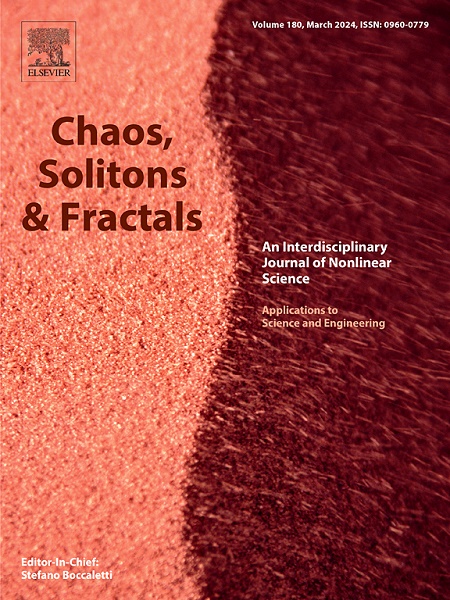移动恶意软件传播中非线性分数网络安全感知模型的机器学习驱动外生神经结构
IF 5.3
1区 数学
Q1 MATHEMATICS, INTERDISCIPLINARY APPLICATIONS
引用次数: 0
摘要
易受攻击的移动设备仍然是信息安全基础设施可持续发展的关键问题,移动恶意软件传播的大量增加进一步放大了移动用户提高网络安全意识的需求。本文提出了一个新的框架,通过构建由Levenberg-Marquardt (MARXNs- lm)算法迭代训练的多层自回归外生网络(MARXNs),探索移动恶意软件传播非线性分数网络安全意识(NFCSA-MMP)模型的机器学习解决方案。NFCSA-MMP系统以无意识易受影响、有意识易受影响、潜伏、爆发、隔离和恢复等部分分区为代表,模拟了恶意软件传播和恢复期间移动设备状态的不同阶段。为了深入研究移动恶意软件的传播机制,利用gr本文章由计算机程序翻译,如有差异,请以英文原文为准。
Machine learning-driven exogenous neural architecture for nonlinear fractional cybersecurity awareness model in mobile malware propagation
A vulnerable mobile device remains a critical concern for the sustainable development of information security infrastructure, and the massive increase in mobile malware propagation further amplifies the need for heightened cybersecurity awareness among mobile users. In this paper, a novel framework is presented to explore the machine learning solutions for nonlinear fractional cybersecurity awareness on mobile malware propagation (NFCSA-MMP) model by constructing multilayer autoregressive exogenous networks (MARXNs) trained iteratively by the Levenberg-Marquardt (MARXNs-LM) algorithm. The NFCSA-MMP system represented with Unaware-Susceptible, Aware-Susceptible, Latent, Breakout, Quarantine and Recovery fractional compartments models the different stages of mobile devices states during malware propagation and recovery. To scrutinize the propagation mechanism of mobile malware, the simulation data generated by utilizing Grünwald–Letnikov (GL) fractional finite difference-based computing procedure for NFCSA-MMP model for both integer and fractional ordered values corresponding to variation in the rate of security-aware mobile devices connected to a network, the rate of latent mobile devices becomes breakout, and the recovery rates of latent, breakout, and quarantined devices due to treatment. The proposed methodology MARXNs-LM is executed on acquired datasets randomly sectioned into training, testing and validation samples by achieving the minimum value of the mean square error (MSE) to determine the machine predictive solution of NFCSA-MMP for each scenario. The vigorousness of proposed MARXNs-LM scheme proven by comparative analysis on convergence trends on reduction of MSE, magnitude of absolute deviation, input-output correlation, error histograms and error autocorrelation statistics for solving stiff NFCSA-MMP model.
求助全文
通过发布文献求助,成功后即可免费获取论文全文。
去求助
来源期刊

Chaos Solitons & Fractals
物理-数学跨学科应用
CiteScore
13.20
自引率
10.30%
发文量
1087
审稿时长
9 months
期刊介绍:
Chaos, Solitons & Fractals strives to establish itself as a premier journal in the interdisciplinary realm of Nonlinear Science, Non-equilibrium, and Complex Phenomena. It welcomes submissions covering a broad spectrum of topics within this field, including dynamics, non-equilibrium processes in physics, chemistry, and geophysics, complex matter and networks, mathematical models, computational biology, applications to quantum and mesoscopic phenomena, fluctuations and random processes, self-organization, and social phenomena.
 求助内容:
求助内容: 应助结果提醒方式:
应助结果提醒方式:


